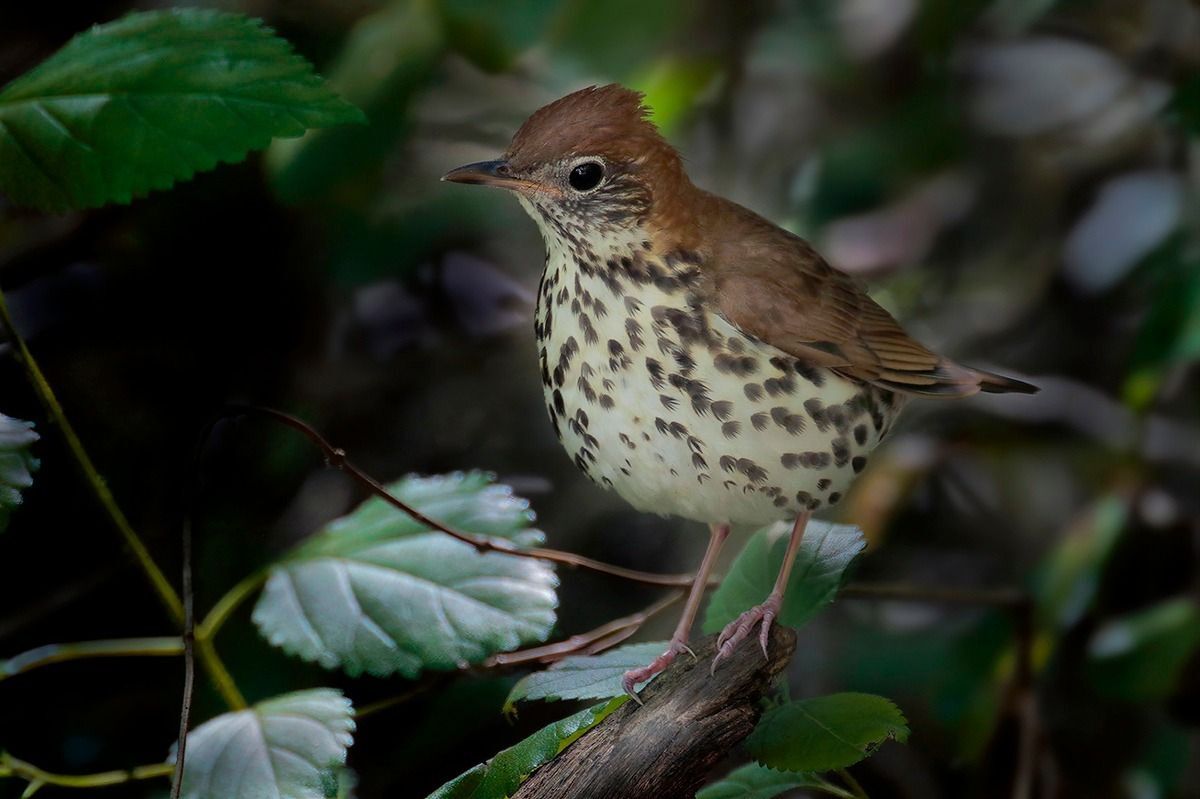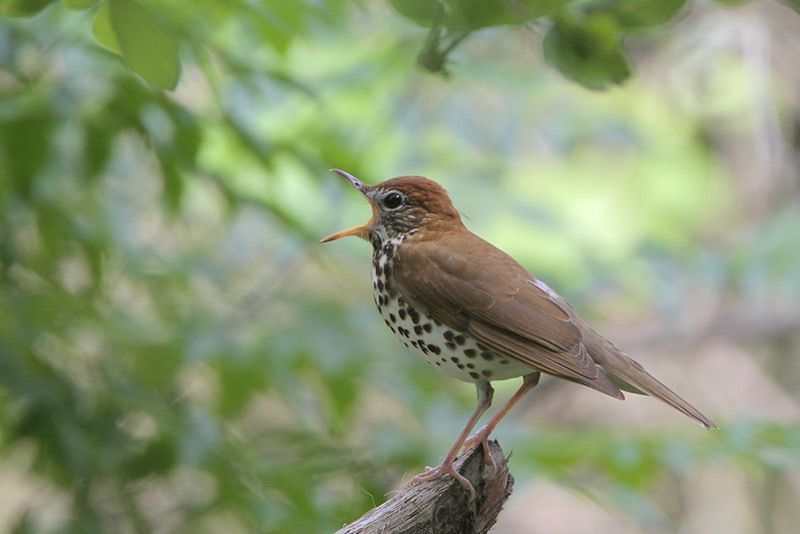Wood Thrush

© Allen Murphy
Hylocichla mustelina
Family: (Turdidae) Thrushes
Preferred Habitat: Moist, deciduous woodlands
Seasonal Occurrence: Common during spring and fall migration; uncommon in summer.
Profile by Rachel Myers: The Wood Thrush is a reclusive songbird whose iconic musical, flute-like song can be heard throughout deciduous forests across the Eastern United States in the summer. Wood Thrushes are more common in the spring and fall on the Upper Texas Coast when they are migrating through the area. They become more uncommon here as summer arrives through fall. Males and females look alike. Wood Thrushes are medium-sized thrushes that are reddish-brown above with round bellies covered in bold, dark spots. They can also be easily identified by their song, a flute-like three-part song with the middle ee-oh-lay phrase.
Wood Thrushes breed in mature deciduous and mixed forests in eastern North America. They prefer habitats with a moderate understory of shrubs, an open floor with moist soil and decaying leaf litter, and a water source nearby. Preferable trees include American beech, red maple, eastern hemlock, flowering dogwood, oaks, or pines. In their winter range, they can be found in mature, shaded, broad-leaved, and palm tropical forests in lowlands. Wood Thrushes usually forage on the ground and feed mostly on leaf litter insects and shrub fruits. Insects can include beetles, caterpillars, spiders, ants, and millipedes. Blueberry, holly, elderberry, black cherry, and black gum are some of the fruits that make up most of the rest of their diet. In preparation for migration, Wood Thrushes will shift their diet toward fatty fruits to gain the energy they need for the journey.
Once the female selects the nest site, she begins building by laying down a platform of vegetative material like grass, leaves or stems. She then weaves more material onto the platform to create a cup-shaped nest and lines it with mud. The nest building process can take 3 to 6 days. A pair will often raise two broods per breeding season with 3 to 4 eggs in a typical clutch. Among many songbirds, Wood Thrushes are vulnerable to nest parasitism by Brown-headed Cowbirds, which lay their eggs in other birds’ nests. Wood Thrushes accept these eggs as their own, and this can lead to less care for their own young and even nestling death from starvation or being pushed out of the nest.
Male Wood Thrushes use their song, which can carry through the dense forest, to establish a territory that averages a few acres. When females initiate pairing, the males will chase the females in silent, circular flights. Between these flights, the pair shares a perch. After pairing, the female will then help the male defend its territory. Unlike many songbirds, where the males compete with each other by matching songs, male Wood Thrushes almost always answer a rival’s song with a different one.
Wood Thrushes are long-distance migrants and will cross the Gulf of Mexico twice a year in a single night each time. They spend the fall and winter in Central America. They breed across the eastern United States. In the Upper Texas Coast, they will arrive in spring and fall during migration, so be sure to keep an eye out on the ground and low into shrubs in our wooded sanctuaries this spring such as Boy Scout Woods and Smith Oaks. A Wood Thrush was spotted just this Monday (March 2024) at our Boy Scout Woods sanctuary!
-
Cornell Lab of Ornithology
-
Bird Guide
-
Bird Library

© Greg Lavaty, www.texastargetbirds.com

© Greg Lavaty, www.texastargetbirds.com

© Greg Lavaty, www.texastargetbirds.com





















